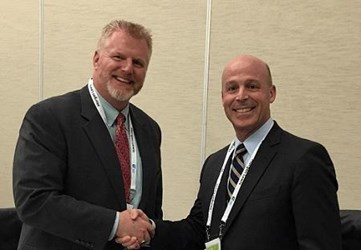Clarity Of Purpose = Committed To A Cure

By Rob Wright, Chief Editor, Life Science Leader
Follow Me On Twitter @RfwrightLSL

From The Cutting Room Floor: August 2016 Issue
One-On-One With Celgene's CEO
When Mark Alles came into pharma about 30 years ago, Celgene’s current CEO (subject of Life Science Leader magazine’s August 2016 cover feature) says basic life and biological sciences were going through somewhat of an evolution built upon by prior knowledge. “But in the cancer space, an area I was able to get into, it was more of a revolution,” he attest. “The understanding of the drivers, genetic and others, for tumorigenesis and cancer cell development was exploding. New chemotherapeutic agents were coming onto the market. Because companies were realizing success through innovation, a lot of money was going into Phase 3 research.” Alles notes that early on, success in cancer didn’t come from a lot of players, and involved a lot of lifecycle product management. “For example,” he says, “The checkpoint inhibitors that everybody is so excited about. Well, there’s a long understanding that if you sensitize a patient’s immune system to attack cancer, some patients go into remission. One hundred years ago, a surgeon in New York City treated patients by putting infectious sources into their body to elicit a response, and some were cured. However, the understanding of how to apply a therapeutic to activate T-cells and other markers to be able to catalyze the immune system to react is only about five years old. It is this understanding that has allowed Celgene to come up with a straight forward purpose that says, ‘we want to discover, develop, and commercialize the most innovative therapeutics’ – and, by the way, in that order.” When Celgene talks about being “committed to a cure,” it is in the context of recognizing that getting to a cure in cancer requires first turning acute disease into chronic disease, and then learning along that continuum. “Then you go from chronic diseases to subsets,” Alles elaborates. “Here is where you can define those subsets as being functionally cured because they have been in remission for a certain period of time. Then the question becomes, ‘Do you still need to treat them?’” For Celgene, being “committed to a cure” is a means of clearly communicating a very simple mission that is yet very complex to achieve. Layered on top of this clarity of purpose is the added complexity of payers demanding greater evidence that support the move from chronic disease to survivorship. “The reason Celgene is so fixated on the word cure is because it sets a high bar that tells us every day what we are trying to do,” he affirms. “Now, we’re going to fail, but along the way, if we really are glued to this cure word, we’re going to do a lot of good for a significant number of people worldwide.”
